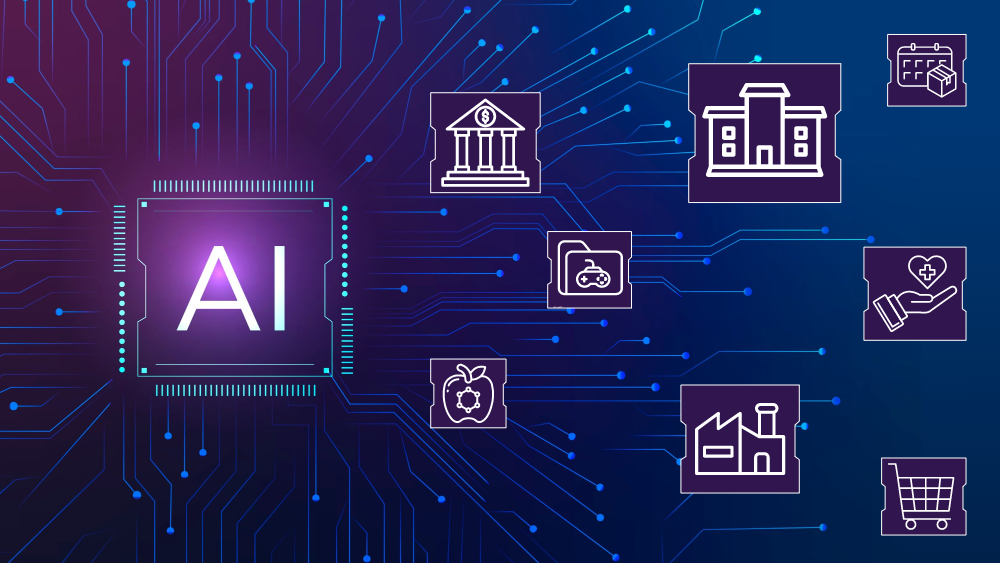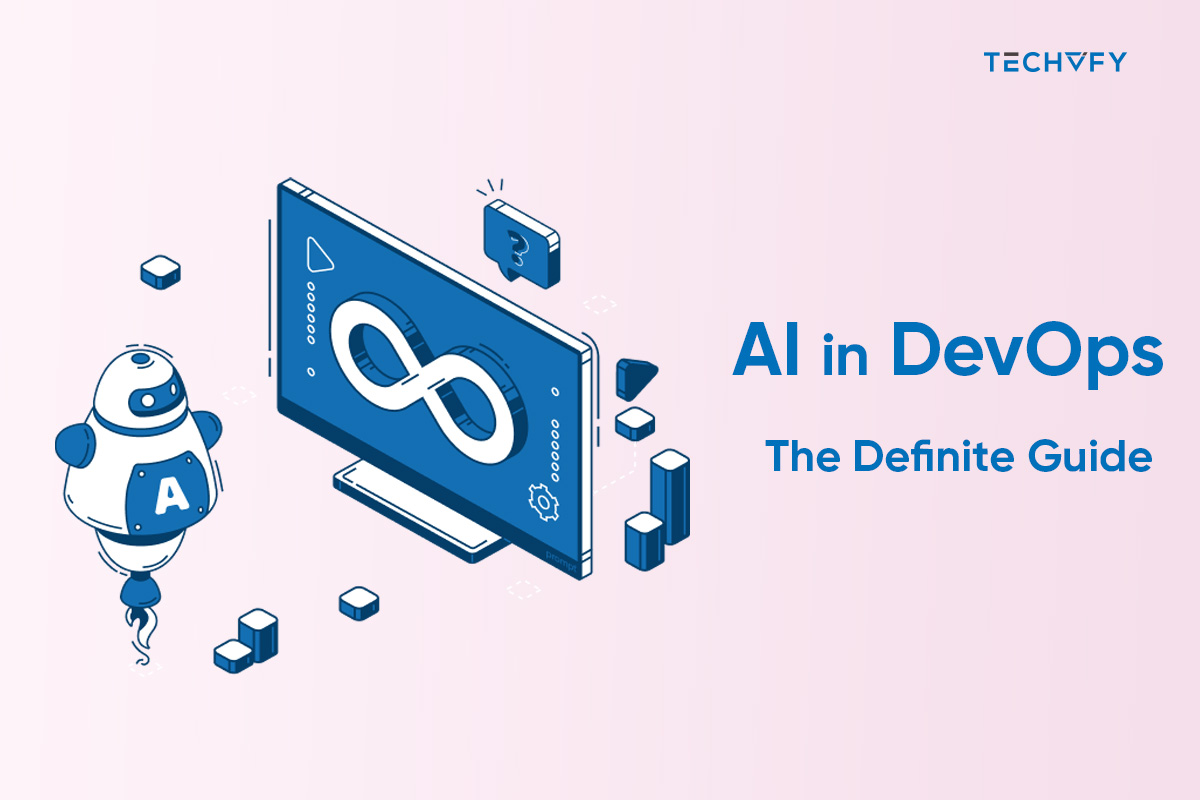Generative AI Solutions: From Concept to Action
- Potter Le
- 0 Comments
These days, generative AI influences many industries and brings about a fresh wave of innovation and change. It is at the center of the latest developments, from innovations in healthcare to transforming the entertainment sector. This revolutionary technology fosters creativity, efficiency, and customized experiences; it is more than a tool. Researchers, developers, and companies worldwide are utilizing its potential to create unimaginable methods. In this article, TECHVIFY will discuss the significance, advantages, practical uses, and implementation of generative AI solutions.
Importance and Relevance of Generative AI in Various Industries
Generative AI stands at the forefront of transformative technologies, impacting industries by introducing novel products, services, and experiences. Several key sectors are already witnessing its effects:
1. Healthcare
Generative AI is crucial in developing novel drugs, diagnosing diseases, and tailoring treatment plans. Examples include identifying new drug targets, creating 3D tumor models, and crafting personalized nutrition plans.
2. Finance
Within finance, it serves essential roles in fraud detection, risk management, and creating personalized financial services. Applications extend from spotting fraudulent transactions to assessing creditworthiness and formulating customized investment portfolios.

3. Manufacturing
Optimizing supply chains, designing innovative products, and refining manufacturing processes are among the applications of this technology in the manufacturing sector. It predicts demand fluctuations, identifies potential product defects, and optimizes production schedules.
4. Retail
The technology personalizes product recommendations in retail, facilitates virtual try-on experiences, and automates customer service. AI can recommend products, create virtual clothing models, and provide automated customer support.
5. Media and Entertainment
This technology shapes the landscape by contributing to diverse entertainment formats such as virtual reality experiences, personalized music playlists, and AI-generated scripts. It creates immersive VR experiences, generates customized playlists based on user preferences, and crafts scripts for movies and TV shows.
Benefits of Generative AI Solutions
| Increased Efficiency | The generative AI approach streamlines workflows, automates repetitive tasks, and frees up human resources. This trait ultimately results in a significant boost in an organization’s total productivity. |
| Economy of Cost | These AI technologies naturally reduce costs through task automation, error reduction, and optimal resource allocation. Organizations can improve their financial health by increasing efficiency. |
| Fostered Creativity | By pushing the boundaries of invention, generative AI enables individuals and teams to explore previously uncharted creative domains. It stimulates the development of an innovative and creative culture. |
| Customized Individual Experiences | Generative AI makes creating experiences and information tailored to users’ requirements and preferences easier. This personalization leads to higher user happiness engagement and deeper relationships with the audience. |
Generative AI Application Areas
-
- Graphics
With the help of generative AI models, it is now possible to create realistic depictions of people, places, and objects that do not exist in the real world. In addition, these models can also be used to create abstract art, design patterns, and textures.
-
- Audio
Generative audio is a branch of computer science that focuses on creating original audio content, such as voiceovers, sound effects, and music. Generative AI models are particularly good at producing creative music, realistic sound effects, and speech synthesizing that sounds human.
-
- Video
Generative video generates fresh content in computer science, including movies, TV shows, and animations. Realistic video sequences, special effects, and human-like movement simulation all get accomplished via generative AI models.
-
- Generative Text
Generative text involves crafting new textual content like poems, code, scripts, musical pieces, emails, and letters using generative AI models. These models are adept at generating creative text formats, translating language, crafting creative content, and providing informative answers to questions.
-
- Generative Code
Generative code focuses on creating new code using artificial intelligence. Generative AI models can generate complete, syntactically correct, and functionally sound code.
More Insights About Generative AI:
How To Build a Generative AI Solution?
Step 1: Defining the Problem
Start by clearly explaining the specific issue your solution aims to solve. Describe the problem, say what kind of information you will use, explain what results you want to get, and state the goals of your solution.
Step 2: Data Collection and Preprocessing
Gather a good collection of information that matches the problem you are addressing. Make sure the information is neat, organized, and correctly labeled. Before using it, clean and adjust the data to work well with your chosen generative AI model.
Step 3: Model Selection and Architecture
Pick the generative AI model that fits your project best. Think about the type of information, the results you want, and the resources you have. Autoregressive models, generative adversarial networks (GANs), and variational autoencoders (VAEs) are standard generative AI models.

Step 4: Model Training
Teach the model using the prepared data. Change the model settings to make it work better. Monitor the training process and make changes to ensure the model learns well.
Step 5: Evaluation and Validation
Check how well the trained model works using specific measurements. Look at the quality and usefulness of the results. Test the model with new data to ensure it works well in real-life situations.
Step 6: Deployment and Maintenance
Put the trained gen-AI model into use. This step might mean including the model in an app or service, letting users access it, and monitoring its performance over time. Keep updating the model with new data and changing its settings when needed.
Step 7: Ethical Considerations
Consider the ethical side of using generative AI. Be careful about possible biases, and reasonably use the model. Make sure to protect user privacy and avoid creating results that could be harmful or upsetting.
Conclusion
As we wrap up this exploration, Generative AI solutions emerge as a driver for innovation across multiple areas. Their capacity to reduce expenses, simplify procedures, and encourage innovation heralds a revolutionary age. Developers can influence the future with the information they have gained from prototyping to deployment. In addition to being a technology, generative AI is an entrance to individualized, effective, and innovative solutions.
Ready to revolutionize your business with cutting-edge innovation? Experience the transformative power of Generative AI with TECHVIFY today. Unlock endless possibilities, streamline your processes, and stay ahead in the digital landscape. Embrace the future of technology – click here to explore our Generative AI services and propel your business into a new era of success!





